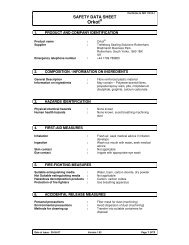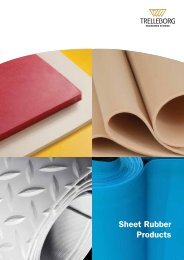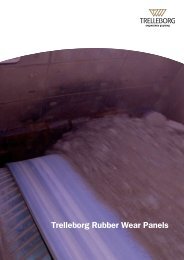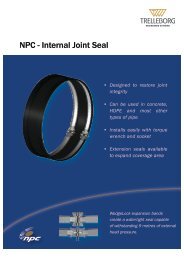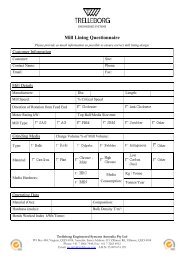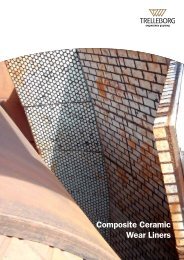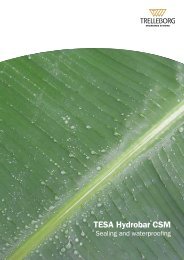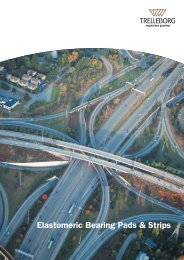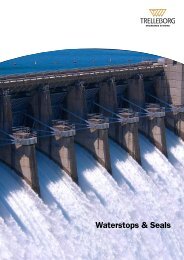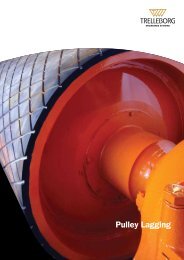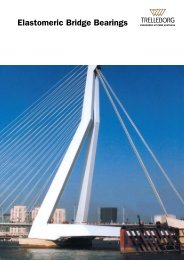Orkot Marine Bearings: Engineering Manual - Trelleborg.com.au
Orkot Marine Bearings: Engineering Manual - Trelleborg.com.au
Orkot Marine Bearings: Engineering Manual - Trelleborg.com.au
- No tags were found...
Create successful ePaper yourself
Turn your PDF publications into a flip-book with our unique Google optimized e-Paper software.
<strong>Orkot</strong> ® <strong>Marine</strong> <strong>Bearings</strong><strong>Engineering</strong> <strong>Manual</strong> for Rudder and Water Lubricated Propeller Shaft <strong>Bearings</strong>BondingThe method of fixture will depend upon the designemployed, however the key point to be emphasisedhere is that in addition to traditional mechanicalfixing, <strong>Orkot</strong> ® materials can be bonded to both itselfand metallic substrates. Please note that if theassembly is to experience in excess of 60-70°C theninterference fitting should be replaced withadhesive bonding.Numerous adhesives are <strong>com</strong>patible with <strong>Orkot</strong> ® andhave been tested within our laboratory facilities.Generally the most suitable adhesives are:● Epoxies.● Acrylics .● Cyanoacrylates.● Polyurethanes.The following is a list of adhesive suppliers whoseproducts have been tested and are approved for usewith <strong>Orkot</strong> ® materials:● Araldite● Belzona● Bisonite● Chockfast● Loctite● PermabondFor specific details of bonding agents and conditionsplease contact our Technical department.General terms and preparations are requiredirrespective of the adhesive to be used.Terms:● The bonding agent is referred to as the adhesive.● The material/surface to which the <strong>Orkot</strong> ® is to bebonded is the substrate.● The distance between the <strong>Orkot</strong> ® and the substrateis the gap.● The ability of the adhesive to bridge and fill the gapis the gap fill.Preparations:● Suitable substrates are <strong>Orkot</strong> ® materials themselvesand various metals (including stainless steel).● Plastics such as polyethylene, polypropylene,polycarbonate, PVC, PTFE are unsuitable substratesfor bonding to <strong>Orkot</strong> ® materials.● The key to effective adhesion is in the preparationof the substrate and the material to be bonded.● Ensure no boundary layers such as oxides or greaseare present. Degrease with a suitable solventensuring local health and safety guidelines arefollowed. <strong>Orkot</strong> ® can be degreased by using a quickwipe with a solvent such as acetone, but exposure tothe solvent must be kept brief so as not to attackthe <strong>Orkot</strong> ® material. Oxides can be removed by useof fine abrasive paper or wire wool.● Roughen the surface. Ideally where metals areinvolved use shot blasting. Ensure any remainingparticulates are removed from the surface. Generallythe slightly fibrous surface of <strong>Orkot</strong> ® does notrequire roughening, though the use of abrasivepaper is acceptable so long as any dust is removed.● The assembled <strong>com</strong>ponents may need support whilethe adhesive sets. This cure time will vary with theconditions under which the adhesive is used.Typically a rule of thumb is that the cure time willhalf for every 10°C increase in temperature.● In terms of assembly, avoid butt joints in favour oflap, so that loads applied to the adhesive joint willact across the assembly in shear.16





